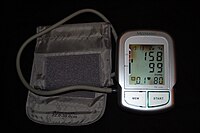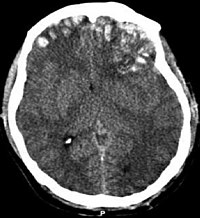
Reduction of Ischemic Brain Edema by Combined use of Paeoniflorin and Astragaloside IV via Down‐Regulating Connexin 43
Sign Up to like & getrecommendations! Published in 2017 at "Phytotherapy Research"
DOI: 10.1002/ptr.5868
Abstract: Paeoniflorin (PF) and astragaloside IV (AS‐IV) have protective effects on cerebral ischemia. We aimed to test the effects of combined use of PF and AS‐IV on ischemic brain edema and investigate whether the effects were… read more here.
Keywords: brain edema; edema; cx43; ischemic brain ... See more keywords

ALDH2 Protects Against Ischemic Stroke in Rats by Facilitating 4-HNE Clearance and AQP4 Down-Regulation
Sign Up to like & getrecommendations! Published in 2018 at "Neurochemical Research"
DOI: 10.1007/s11064-018-2549-0
Abstract: Aldehyde dehydrogenase 2 (ALDH2) is a new therapeutic target in the central nervous system. However, the association between ALDH2 and brain edema following ischemic stroke (IS) remains unclear. The present study was investigated to whether… read more here.
Keywords: brain edema; ischemic stroke; hne clearance; brain ... See more keywords

Brain Edema from a Hypertensive Emergency: A History Before the PRES Designation
Sign Up to like & getrecommendations! Published in 2022 at "Neurocritical Care"
DOI: 10.1007/s12028-022-01454-x
Abstract: The diagnosis of posterior reversible encephalopathy syndrome (PRES) is both commonly made and not considered. Far before the introduction of the moniker PRES, clinicians and pathologists linked hypertension to damage of the brain, particularly when… read more here.
Keywords: brain edema; history; white matter; edema hypertensive ... See more keywords

Establishment of novel technical methods for evaluating brain edema and lesion volume in stroked rats: A standardization of measurement procedures
Sign Up to like & getrecommendations! Published in 2019 at "Brain Research"
DOI: 10.1016/j.brainres.2019.04.022
Abstract: Stroke plays a role in high morbidity and mortality. Deciphering its mechanisms and pathophysiology is critical for the creation of new drugs and therapies. Most of the previous animal models of stroke, aimed at identifying… read more here.
Keywords: brain edema; resonance imaging; establishment novel; resonance ... See more keywords

Involvement of the p38 MAPK signaling pathway in overexpression of matrix metalloproteinase‐9 during the course of brain edema in 1,2‐dichloroethane‐intoxicated mice
Sign Up to like & getrecommendations! Published in 2018 at "Neurotoxicology"
DOI: 10.1016/j.neuro.2018.07.022
Abstract: &NA; Accumulated data have revealed that subacute poisoning of 1,2‐dichloroethane (1,2‐DCE), an industrial solvent used in some countries can cause encephalopathy, in which brain edema is the main pathological change. However, the underlying mechanisms are… read more here.
Keywords: brain edema; kgr; p38; signaling pathway ... See more keywords

Osteopontin attenuates inflammation via JAK2/STAT1 pathway in hyperglycemic rats after intracerebral hemorrhage
Sign Up to like & getrecommendations! Published in 2018 at "Neuropharmacology"
DOI: 10.1016/j.neuropharm.2018.06.009
Abstract: ABSTRACT Acute intracerebral hemorrhage (ICH) complicated by hyperglycemia is associated with aggravation of post‐stroke inflammation, leading to exacerbation of brain edema and predicting poor neurological outcomes and higher mortality of patients. Osteopontin (OPN) is a… read more here.
Keywords: brain edema; inflammation; jak2 stat1; hyperglycemic rats ... See more keywords

Intracellular ion and protein nanoparticle-induced osmotic pressure modify astrocyte swelling and brain edema in response to glutamate stimuli
Sign Up to like & getrecommendations! Published in 2019 at "Redox Biology"
DOI: 10.1016/j.redox.2019.101112
Abstract: Intracellular tension activity plays a crucial role in cytotoxic brain edema and astrocyte swelling. Here, a few genetically encoded FRET-based tension probes were designed to detect cytoskeletal structural tension optically, including their magnitude and vectors.… read more here.
Keywords: brain edema; astrocyte swelling; osmotic pressure;

Noninvasive monitoring of brain edema after hypoxia in newborn piglets
Sign Up to like & getrecommendations! Published in 2018 at "Pediatric Research"
DOI: 10.1038/pr.2017.264
Abstract: BackgroundDevelopment of cerebral edema after brain injury carries a high risk for brain damage and death. The present study tests the ability of a noninvasive cerebral edema monitoring system that uses near-infrared spectroscopy (NIRS) with… read more here.
Keywords: brain edema; water; monitoring; edema ... See more keywords

Effect of X-rays on transcript expression of rat brain microvascular endothelial cells: role of calcium signaling in X-ray-induced endothelium damage
Sign Up to like & getrecommendations! Published in 2020 at "Bioscience Reports"
DOI: 10.1042/bsr20193760
Abstract: Abstract Radiation-induced brain edema is a serious adverse effect of radiotherapy. Although there are many causes of radiation-induced brain edema, the pathogenesis is not clear and clinical treatment is not ideal. Therefore, knowing the differential… read more here.
Keywords: expression; induced brain; radiation; ray ... See more keywords

Erythropoietin Attenuates the Brain Edema Response after Experimental Traumatic Brain Injury
Sign Up to like & getrecommendations! Published in 2018 at "Journal of Neurotrauma"
DOI: 10.1089/neu.2017.5015
Abstract: Abstract Erythropoietin (EPO) has neuroprotective effects in multiple central nervous system (CNS) injury models; however EPO's effects on traumatic brain edema are elusive. To explore EPO as an intervention in traumatic brain edema, male Sprague–Dawley… read more here.
Keywords: brain edema; brain injury; brain; traumatic brain ... See more keywords

Delayed Administration of BQ788, an ETB Antagonist, after Experimental Traumatic Brain Injury Promotes Recovery of Blood-Brain Barrier Function and a Reduction of Cerebral Edema in Mice.
Sign Up to like & getrecommendations! Published in 2018 at "Journal of neurotrauma"
DOI: 10.1089/neu.2017.5421
Abstract: Traumatic brain injury (TBI) is induced by immediate physical disruption of brain tissue, and causes death and disability. Studies on experimental TBI animal models show that disruption of the blood-brain barrier (BBB) underlies brain edema… read more here.
Keywords: brain edema; recovery; administration bq788; fpi ... See more keywords